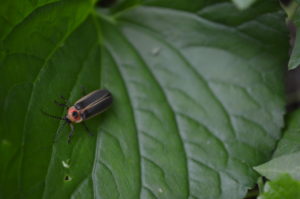Summer is still, officially, several days away, but summer insects already have been active.
Lightning bugs, also known as fireflies, are among the insects that fascinate young and old alike.
Several years ago, I attended a Winter Gardening Fair in which entomologist Donald Lewis answered some of my burning questions regarding this beneficial beetle.
Lewis noted that lightning bugs spend most of their life – up to 11 months of the year – as larvae living under damp mulch, leaf litter and plant debris. So, pristine yards are less hospitable to this stage of lightning bug, and the same is true of the adults, which rest during the day in tall grass, trees, shrubs and crop fields.
Lightning bugs are active at night and need a certain amount of humidity or they would dry up in the hot summer sun. So, as bothersome as Iowa’s humidity can be, residents of states with a drier climate don’t get to see nature’s fireworks.
For every child (and adult) who has wondered what lightning bugs eat, Lewis said in their larval stage, lightning bugs prey on slugs and eat other insect larvae and snails.
Adult lightning bugs might occasionally feed on nectar, he said, but generally do not eat.
The Indian Creek Nature Center in Cedar Rapids is offering a Firefly Walk on June 24, 2016. Find more information here.


So for all those years, all of those handfuls of grass lining a jar with holes in the lid, that really wasn’t a bedtime snack for the lightning bugs after all.
Ha! Unfortunately they weren’t eating the grass, but maybe it made it more comfortable in the jar!